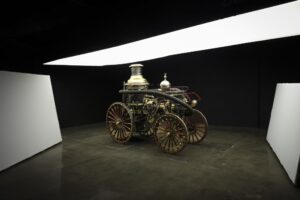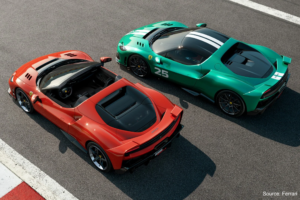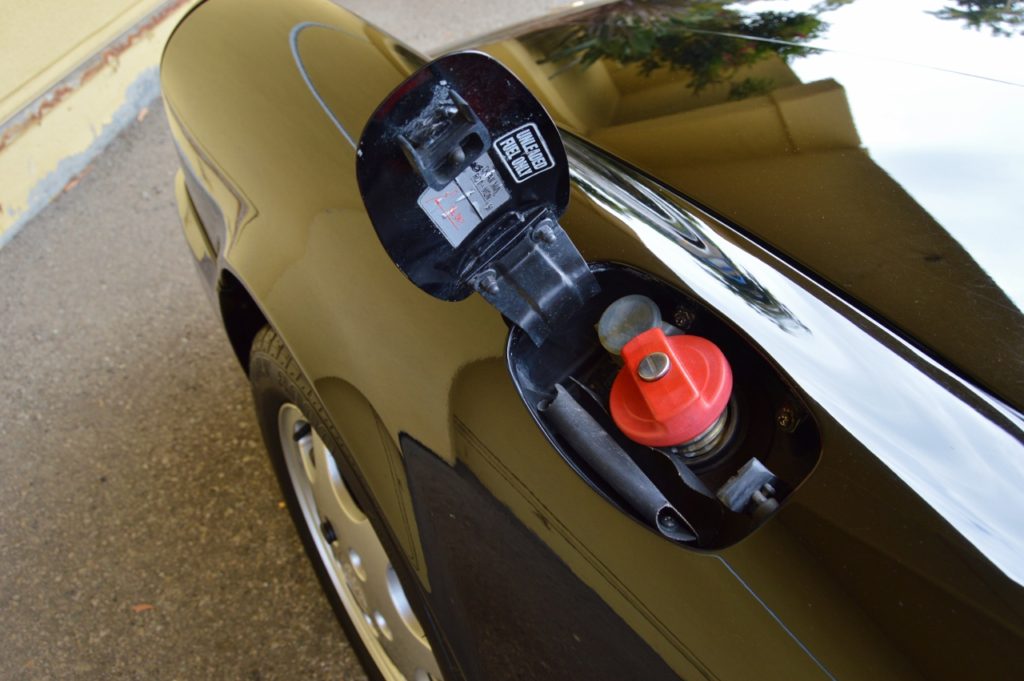
Arising during nearly the same decade, airplanes and automobiles share a storied chronicle of technological symbiosis. Planes (especially during their first five decades) were a lot like an older brother to cars: passing on vital information and experiences to their younger sibling. Technological innovations and scientific breakthroughs within aviation, allowing aircraft to soar higher and faster, soon found their way into cars which benefitted much in the same way. When considering those discoveries – aside from aerodynamics – methods of fuel injection may well be the most paramount piece of engineering inherited from the wild blue yonder’s masters.
Fuel injection, as a basic idea is relatively easy to grasp. Combustible liquid is pumped from the fuel tank, pressurized, then mixed with outside air. The combination is then sucked into the engine to produce a fiery ignition generating energy. Simply speaking, it only really differs from a carbureted fuel systems in terms of the moment the fuel is blended together with the air.
However, those milliseconds between matter considerably. When compared to carbureted systems, fuel injection typically increases power, fuel efficiency, lowers emissions, allows for different fuels to be used, increases reliability, smooths out engine operation, and allows for a broader range of engine tuning possibilities. Even though gasoline direct injection (GDI) is widely available in nearly every new car, it has been a long road to walk before an entry-level 1.0-liter Ford Focus could bring you those beautiful benefits.
As with much of history, who successfully did it first can create a lengthy, heated debate, but generally speaking, fuel injection really got its start very early in the 20th century. However, it was Herbert Stuart who first developed and commercially sold a system similar to modern pressurized fuel injection in 1892. This method was soon improved upon by Robert Bosch, whose company would ultimately compile and pioneer most of the world’s advances into an effective system during the seventies. Another successful employment was with the Antoinette 8V; a French V8 powered aircraft that utilized indirect fuel injection around the year 1902. While all attempts were revolutionary steps toward bettering fuel delivery, each of these ideas were still nascent, requiring far more time to perfect.
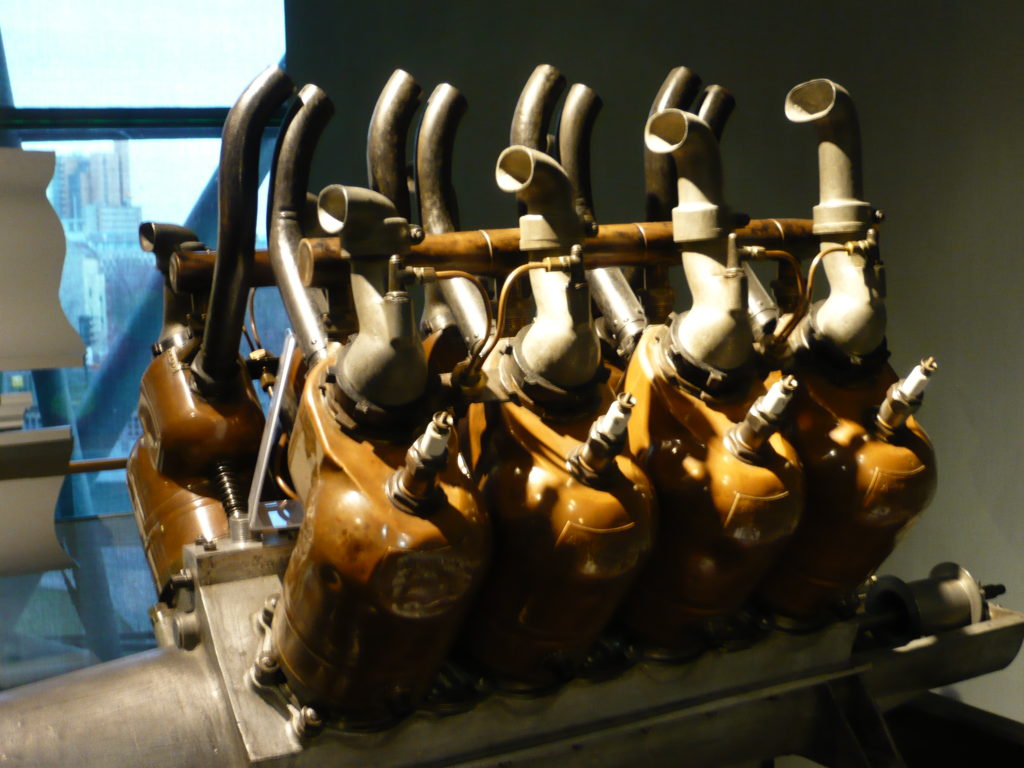
So while there are several variations on when and where the air/fuel mixture happens and historically who made it come about, reliable direct fuel injection has long been the final goal for gasoline. Where carburetors join the fuel and air before the intake and mechanical fuel injection mix them inside the intake tube (just milliseconds before the valves open), direct fuel injection works by pulling pure air straight into the cylinder and then charging it with fuel just moments before ignition. Eventually, it was Jonas Hesselman, a Swedish engineer, who was the first to improve reliability within this system during the middle of the 1920s.
As mentioned, airplanes were typically the vanguard of technological discoveries that would later become commonplace in cars. As countries across Europe in the 1930s began to see the dark clouds of war thundering overhead, each rapidly began investing in novel aircraft technology, and direct injection was a perfect candidate. The systems yielded vast improvements in power output while guaranteeing consistent engine performance even under extreme levels of gravitational stress that would quickly render traditional fuel delivery systems ineffective. The German military first recognized these benefits, and by 1939 almost all high-output motors used in their aircraft came with direct injection systems. Although extremely complex (sometimes requiring up to fourteen fuel pumps) and heavy, the system’s performance advancements helped their aircraft to outperform rival aircraft easily.
With the conclusion of World War Two, members of the armed forces returned home to an automotive industry eager to expand through the use of these contemporary innovations. Mechanical fuel injection (MFI) was the first to be successfully trialed large-scale since it was easier to incorporate into current engine designs. Still aspiring to his legacy, hot rodder Stuart Hilborn outfitted anything and everything he intended to race with MFI systems. Salt-flat racers determined to establish land speed records, oval track racers looking to resolve fuel starvation issues, and even midget racers all received the conversions that would put Hilborn on the path to success. Nevertheless, the system was still expensive and required above-average mechanical know-how to tune and repair. These limitations rendered much of its use exclusively within racing teams who had a flexible budget.

It would be in the 1950s that direct injection first came into use in an automobile and when mechanical fuel injection first became practical for standardized production. That initial success came in 1952, when Germany’s Bremen-based car company, Goliath produced the GP700. Although only a handful of GP700s were built, the two-cylinder water-cooled motor was the first production car ever available with direct fuel injection. The Bosch system was efficient enough to render a power improvement of nearly 15% above its carbureted equivalent. Five years after Goliath, Mercedes took their knowledge of direct-injected aircraft engines and built a Formula 1 powerplant.
With the W196 motor, Mercedes easily stampeded atop competitors. During two successive seasons (1954 & 1955) they won nine of the twelve races held, handily securing the World Championship trophy both years. Motivated from those victories, Mercedes implemented direct injection into their 300SLR race car and production sports car equivalent, the 300SL. Both now-legendary flagships of the Mercedes empire thanks to their unrivaled engineering and success. So while the use of direct injection in the limited-production GP700 was a world’s first, and its use in the 300SL was remarkable for its drastic performance benefits, many problems persisted. Overall, the system remained complicated, unreliable for daily use, and financially challenging for companies to smartly engineer across their line up. Thankfully, though, Mercedes was not the only company endeavoring to push for the development of fuel injection and its availability during the 1950s.
In 1957, Chevrolet’s still-new sports car, the Corvette could be had with a less expensive (compared to DFI), mechanical fuel injection (MFI) system that offered some of the benefits of DFI. Chevrolet’s system, in essence, used a plunger that coincided its movements with the air intake to regulate a constant flow of fuel amongst the cylinders. Supplying the fuel was a high-pressure pump working in tandem with a fuel meter that received readings from the plunger. These operations were all dictated based on fuel requirements taken from the engines speed and load. The system, like its predecessors, was complicated and few Corvette’s were produced with MFI, but the idea was permeating throughout the automotive landscape. During that same year, another engineering breakthrough in computer technology that had been in the works for four years would finally clear the path for fuel injection to take flight – for cars!
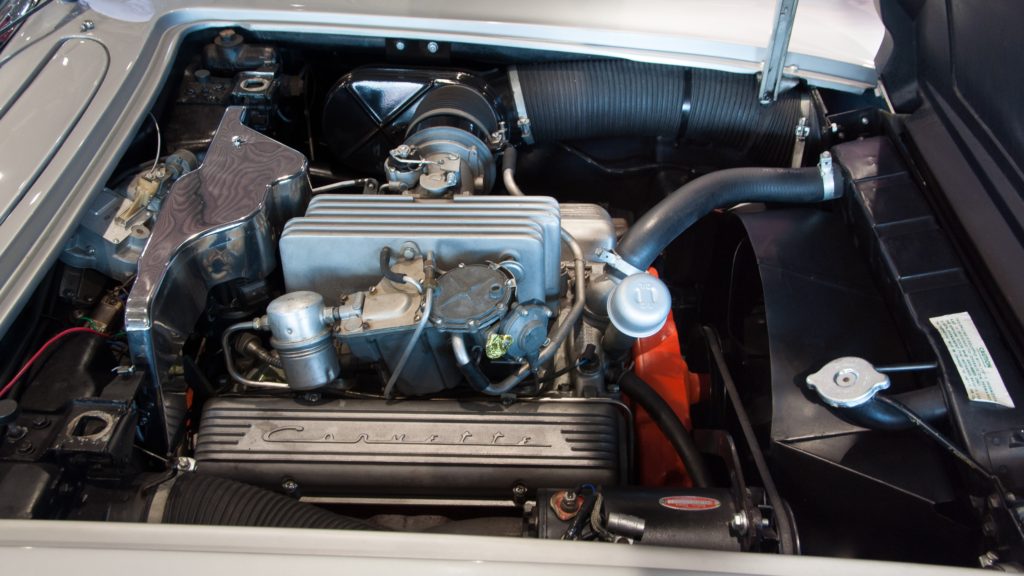
Established as an aircraft and automobile part manufacturer, American engineering company Bendix ventured into developing ways to eliminate issues with carburetors by enhancing fuel injection systems with electronic computers in 1953. By 1957, as Chevrolet was touting the arrival of their new mechanical fuel injection system, their competitor, American Motors Company (AMC) was already working out the bugs on the first electronic fuel injection system – known as the “Electrojector.” Set as a $395 option on their Rambler Rebel, the EFI system produced peak torque sooner and offered 33 more horsepower over its carbureted companion. Issues with operation in cold temperatures and the sheer complexity of the system unfortunately slated it as a failure to launch for AMC.
Bendix and their Electrojector were not quite finished, in any case. A year later, Chrysler elected to offer the Bendix system on several of their models having been assured that the teething troubles were resolved – they were not. Although the 35 cars Chrysler produced with the Electrojector system went down in history as the first cars with EFI, they would not stay that way. Plagued by the same problems as AMC, the Chrysler cars were soon retrofitted with carburetors. After all of their travails, Bendix decided to hang up their hat on the project, but their advances had illuminated the path for another company. By selling the patent information to Germany’s Bosch, work on the EFI system steamed forward – slowly.
Even with more companies attempting mechanical fuel injection systems, they never truly became wildly popular outside of racing applications during much of the sixties. The widespread acceptance of fuel injection would occur ten years after Bendix’s first attempt at electronically enhancing it, finally achieving consistent operational reliability. Jetronic by Bosch, later re-christened D-Jetronic, was first offered in Volkswagen’s Type 3 1600TL/E in 1967 and although fledgling – it worked. Operating by the use of twenty-five transistors interpreting air density and engine speed measurements, Jetronic used those readings to calculate an allotment of fuel for use. Even with its relatively slow response time, the system provided improvements over carburetors, and soon manufacturers like Mercedes Benz, Porsche, Saab, Volvo, and others were making it broadly available.
With the enigma cracked and mandated regulations from Environmental Protection Agency (EPA) about emissions and fuel quickly approaching in the United States, many manufacturers saw EFI as their golden ticket to meet requirements. By 1974, the EPA regulations were legally-binding, but Bosch had recently unveiled a more efficient system now called K-Jetronic. Meanwhile, in Japan, Toyota became the first to offer EFI in their sporty compact the Celica, and competitor Nissan was in close pursuit. With the European and Japanese contingent safely afloat, car maker Cadillac triumphantly brought American manufacturers into the modern era with the help of Bendix by introducing their own EFI system in 1975. Although, the system was basically a clone of Bosch’s D-Jetronic unit.

As manufacturers began to utilize the EFI systems increasingly, improvements naturally progressed at a faster rate. In 1977, Volvo was the first to offer a model with an exhaust-mounted oxygen sensor developed by Bosch. The inclusion of the sensor effectively closed the circuit of information on EFI systems. By taking composition measurements of the exhaust gas, the central control unit could now compare the concentration to oxygen coming in to further trim or enrich the air/fuel mixture before it is ignited thereby drastically improving emissions and fuel usage.
By the end of the 1980s, carburetors were now a relic in the annals of automotive history. The first year of that new decade, an American electronics company, Motorola showed us the future of car management systems with the EEC-III. The patriarch of all modern engine control units (ECU), EEC-III grouped fuel injection and spark timing and other engine functions together into one intelligently integrated control module.
However impressive EFI systems had become during the 1980s and 1990s, direct fuel injection (DFI) was still the final objective. Even though thirty to forty years had passed since Goliath and Mercedes first sold it, DFI remained an expensive undertaking. Recognizing an opportunity to ascertain an edge in the market, Mitsubishi capitalized on DFI in 1996 by offering it on their Galant model, which was initially available only in the Japanese domestic market. The endeavor was expensive, sophisticated and failed to deliver on improvements to fuel efficiency. However, since the move had been made, others followed suit thanks to EFI and manufacturing efficiencies. By the millennium multiple car companies worldwide had projects ready to be finalized or had already implemented them.
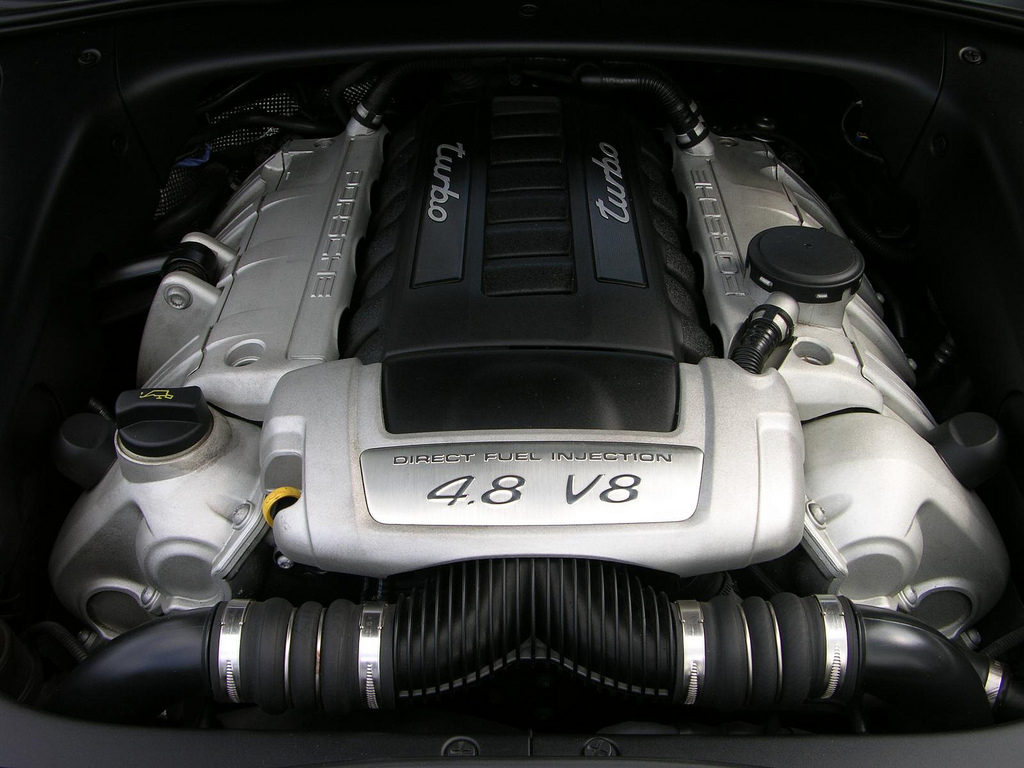
In the present day, DFI systems are nearly ubiquitous among even common entry-level of vehicles. Yet many issues with their operation remain prevalent – especially with the advent of commercial turbocharging. Multipoint injection systems are advantageous against some of these new-found concerns, and many manufacturers are already investigating ways to employ them cost-effectively. From mechanical injection to electronic injection, each has served its purpose to make the ultimate goal of direct injection possible. The idea has persisted through an entire century of aeronautical and automotive applications and developments to finally bring us the performance benefits we needed and wanted at an affordable price-point.
Christopher Fussner is the Editor-in-Chief here at WOB Cars and MotoringHistory.com. He writes at his home in Los Angeles, manages a car collection, has a genuine passion for cars and racing, a love of Star Wars, and his favorite dinosaur is Carnotaurus. Did we just become best friends?


